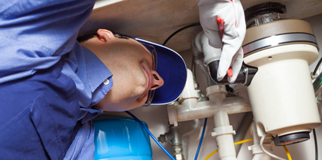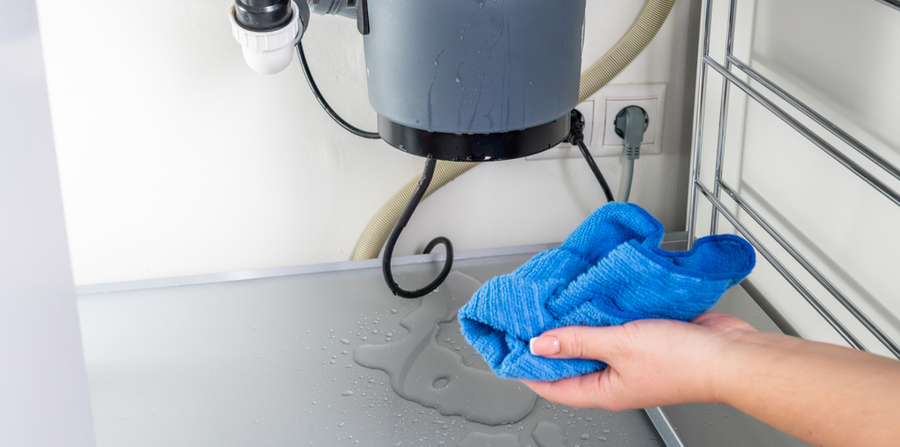Simple Ways to Repair a Leaky Waste Disposal Unit
Simple Ways to Repair a Leaky Waste Disposal Unit
Blog Article
Just how do you actually feel in regards to Garbage Disposal Leaking From Bottom?

Waste disposal unit are crucial cooking area devices that aid in getting rid of food waste efficiently. However, a dripping waste disposal unit can be a frustrating and unpleasant issue to handle. Fortunately, several leakages can be repaired conveniently with a couple of simple actions. In this short article, we will review exactly how to fix a leaking waste disposal unit efficiently.
Introduction
Waste disposal unit are set up under cooking area sinks and are made to shred food waste right into smaller pieces, permitting it to go through the plumbing system easily. While these tools are normally dependable, leakages can take place gradually due to damage, loose links, or damage to the unit.
Step-by-Step Overview to Fixing a Dripping Garbage Disposal
Switch off the Power
Before trying any repair services, ensure that the power to the waste disposal unit unit is shut off to stop the risk of electrical shock.
Situate the Leakage
Recognize the precise place of the leak and determine the reason
Tighten Connections
Make use of a wrench to tighten any loose links between the disposal unit and the pipes system.
Replace Seals or Gaskets
If the leak results from worn seals or gaskets, remove the old elements and replace them with brand-new ones.
Patching Cracks or Holes
For splits or holes in the disposal device, use epoxy or an appropriate patching product to seal the damaged location.
Identifying the Resource of the Leakage
Before attempting to deal with a leaking waste disposal unit, it is essential to determine the resource of the leakage. This can generally be done through visual assessment or by performing straightforward examinations.
Visual Evaluation
Examine the waste disposal unit system thoroughly for any kind of indications of water leakage. Pay close attention to locations around seals, gaskets, and connection points.
Checking for Leakages
One means to check for leaks is by running water through the disposal unit and looking for any noticeable indications of leakage.
Usual Causes of Leakages in Garbage Disposals
Worn Seals and Gaskets
Seals and gaskets play a critical duty in avoiding water from leaking out of the garbage disposal. With time, these parts can wear away, resulting in leaks around the disposal system.
Loose Connections
The links in between the garbage disposal and the plumbing system can come to be loosened with time, causing water to leak out during operation.
Cracks or Openings in the Disposal Device
Physical damage to the garbage disposal, such as cracks or holes in the housing, can additionally cause leakages.
Tools and Materials Needed for Fixing a Dripping Garbage Disposal
Before beginning the repair work process, gather the necessary devices and products, including a screwdriver, flexible wrench, plumbing technician's putty, replacement seals or gaskets, and epoxy or patching material for fixing fractures or openings.
Checking the Waste Disposal Unit After Repair Service
When the repair is full, evaluate the garbage disposal by running water through it to guarantee that the leak has been resolved.
Preventive Upkeep Tips to Avoid Future Leakages
To avoid future leaks, it is vital to carry out regular upkeep on your garbage disposal. This consists of keeping it clean, staying clear of putting non-food things or hard items down the disposal, and occasionally checking for leaks or various other concerns.
Final thought
Finally, repairing a leaking waste disposal unit is a relatively simple procedure that can be completed with fundamental devices and materials. By following the actions laid out in this article and practicing precautionary upkeep, you can maintain your waste disposal unit in good working problem and stay clear of pricey repairs in the future.
HERE’S HOW TO FIX YOUR GARBAGE DISPOSAL
WHAT TO DO IF SOMETHING IS STUCK IN YOUR GARBAGE DISPOSAL
If the impeller won’t turn, there’s probably something stuck in the disposal. It could be a steak bone or peach pit, although plumbers report pulling all sorts of inappropriate objects out of disposals, such as bottle caps or aluminum foil. Make sure power to the disposal is off, and look inside to see if you can see the source of the jam.
Never stick your fingers in a disposal. Pull out anything you see with tongs or pliers.
If the disposal still won’t work, it may be time to call a plumber or consider buying a new disposal. GEM Plumbing & Heating is here for all of your garbage disposal needs.
WHAT TO DO IF YOUR GARBAGE DISPOSAL DRAIN IS CLOGGED
Take everything out from underneath your sink and put a bucket or other container under your disposal to catch any water that drains out. Disconnect your disposal from the power supply. If it’s plugged into a wall outlet, unplug it. If it’s hardwired into an electrical box, go to the electrical panel and turn off the breaker for the disposal. Pour ¼ cup of baking soda into the drain, followed by ½ cup of white vinegar. Give the solution a few minutes to fizz and do its work. Look into the disposal with a flashlight to see if you can see an object that might be causing the clog. If you see it, remove it using tongs or pliers. MORE TIPS ON DEALING WITH A CLOGGED GARBAGE DISPOSAL
Never use drain cleaner in a garbage disposal. It can damage the plastic parts inside the disposal. You can also be splashed with the caustic liquid while working to clear the clog. Beware! Never stick your fingers into a garbage disposal. Trust us — not a good idea. In many instances, your dishwasher drains through your garbage disposal. This allows the disposal to grind any large food particles that may be drained out of your dishwasher. There are some jurisdictions, however, where the plumbing code prohibits such a connection. WHAT TO DO WHEN YOUR DISHWASHER DRAINS THROUGH THE DISPOSAL
Run some water in the sink so your plunger has at least a ½-inch of water to create a seal and plunge vigorously up and down several times. You may need to repeat this several times. Run hot water down the drain to clear any residue that remains.

I'm just very enthusiastic about Why Is and I really hope you appreciated my entry. Be sure to take the time to distribute this content if you appreciated it. Thank you for taking the time to read it.
Free Estimates Report this page